Beverly Gray's Blog: Beverly in Movieland, page 69
March 22, 2019
Checking Out “The Library Book”
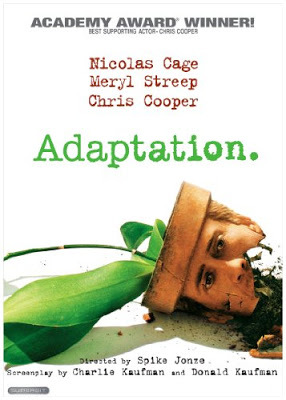 Books and reading tables make for a great backdrop in so many movies. George Peppard declares his love for Audrey Hepburn in a New York library in Breakfast at Tiffany’s. High school kids (Molly Ringwald and Emilio Estevez among them) serve their Saturday morning detention in the school library in The Breakfast Club. Robert Redford and Dustin Hoffman search for evidence of high crimes in the Nixon White House by scouring the collection of the Library of Congress in All The President’s Men. Cop Morgan Freeman tracks down the m.o. of a serial killer through an eerie late-night visit to a police library in Se7en.
Books and reading tables make for a great backdrop in so many movies. George Peppard declares his love for Audrey Hepburn in a New York library in Breakfast at Tiffany’s. High school kids (Molly Ringwald and Emilio Estevez among them) serve their Saturday morning detention in the school library in The Breakfast Club. Robert Redford and Dustin Hoffman search for evidence of high crimes in the Nixon White House by scouring the collection of the Library of Congress in All The President’s Men. Cop Morgan Freeman tracks down the m.o. of a serial killer through an eerie late-night visit to a police library in Se7en. Those of us who are book lovers feel we know what libraries look like, feel like, sound like (Ssssh!). And we have in our heads a clear image of librarians: usually females of a certain age, wearing glasses on the tips of their noses, shushing the patrons, clearly more comfortable with books than people. (At home they cuddle with their cats, while reading Jane Austen and sipping hot milk.) It’s true there’ve been a series of made-for-television fantasy movies called The Librarian (and later The Librarians), in which the lead characters have nearly magical powers. But mostly when we think of movie librarians we summon up people like Katharine Hepburn as a prickly, no-nonsense research ace in Desk Set, as well as the adorable but oh-so-prim Shirley Jones, keeping order at the Madison Public Library in The Music Man.
The Library Book is determined to change our opinion of libraries, and of librarians, once and for all. It’s written by New Yorker staffer Susan Orlean, whose earlier The Orchid Thief was the basis for the 2002 Spike Jonze film, Adaptation .In the highly original script written by Charlie Kaufman, Orlean (as portrayed by Meryl Streep) becomes something of a fictional character herself, a journalist seduced by her protagonist -- a mangy orchid thief -- into a life of sex, psychedelics, and crime. The real Orlean has had a slightly less colorful life, but there’s no question she’s attracted by off-kilter subject matter.
One off-kilter subject in The Library Book is the late Harry Peak, a would-be actor who on the morning of April 29, 1986 may or may not have set the fire that nearly destroyed the Los Angeles Central Library. Peak, a ne’er-do-well with a winning smile and a compulsion for lying, was investigated but never charged. As a result of the fire, 400,000 volumes were destroyed. Happily the people of Los Angeles rallied to save the wonderfully fanciful library building and to rebuild its collections. The restored and much enlarged library (which dated from 1926) re-opened in 1993 and continues to flourish in the heart of downtown L.A.
Though Harry Peak is a lively presence in The Library Book, the real hero of the story is the library itself. Orlean has peered into every department, interviewed many staff members, and absorbed the pleasures of the renovated building. Along the way, she explores the innovations that libraries (both in Los Angeles and worldwide) are bringing to their communities: new technologies, ideas for social services, programming to appeal to those of all ages and cultural levels. Today’s libraries are, among many other things, repositories of films and film-related programs. Many years ago, when I was quite small, TV launched Cavalcade of Books. On its inaugural episode, the show honored the children’s department of the Los Angeles Central Library. There was an actual children’s librarian present, and I was the curly-headed moppet asking for books about dance. How wonderful that the library is thriving again.
Published on March 22, 2019 12:00
March 19, 2019
Fresh Tales of Dirty Rotten Scoundrels

Why do we all enjoy rogues so much—except when they’re taking advantage of us? Over the weekend I finally caught up with an oldie but goodie: the 1988 comedy, Dirty Rotten Scoundrels.In this droll farce set along the sun-kissed beaches of the French Riviera, Michael Caine plays what is essentially the David Niven part. (Niven took on a highly similar role in the highly similar Bedtime Story, from 1964.) Caine plays a suave English “gentleman” who, with help from the local constable and hotel concierge, lures wealthy female tourists into entrusting him with their money and valuables. In the eyes of his selected pigeons, he’s a prince in exile, quietly trying to finance the popular uprising that will help him reclaim his throne, and they flock to press their jewels into his waiting hands.
Enter a rival of sorts, one who threatens to beat him at his own game. He’s Steve Martin, playing a brash American who uses tales of a dying grandmother to extract money from vulnerable women. When he discovers the elaborate con that Caine has going, he becomes an instant disciple, leading to some ludicrous scenes in which Martin (posing as Caine’s idiot brother) can only be said to emulate Jerry Lewis at his most exasperating. Obviously, this is my least favorite part of the film. But soon the men’s relationship turns into a lively battle of wits, with the two of them vying to see who can be first to extract $50,000 from a bubbly young American soap queen (Glenne Headley). Naturally a twist ending brings the proceedings to a satisfying close.
Of course Hollywood has given us many notable movies about con men (and con women – let’s not forget Barbara Stanwyck in the 1941 Preston Sturges classic, The Lady Eve.) Among everyone’s favorites is the 1973 Oscar winner, The Sting, in which Paul Newman and Robert Redford pull off a magnificent con via a phony high-stakes betting parlor. I’m also partial to 1990’s The Grifters, which introduced me to the slippery talents of director Stephen Frears and actress Annette Bening. Lawrence Turman, soon to produce the classic The Graduate, got his start as a solo producer with The Flim-Flam Man, a 1967 comedy starring George C. Scott as a con artist plying his trade in the byways of the American South. Tom Hanks’ straight-arrow FBI man chases down Leonardo DiCaprio’s gifted grifter in another favorite of mine, Spielberg’s 2002 Catch Me if You Can.
Like Catch Me If You Can, Dirty Rotten Scoundrels found additional success as a Broadway musical. An even more famous musical about a con man is an American classic, The Music Man, in which a Midwestern traveling salesman lines his pockets while claiming to be assembling boys’ marching bands. When caught, Professor Harold Hill admits that even heis fooled by his own high-flown rhetoric: “I always think there’s a band, kid.” This sense of a liar caught up in his own lies seems to fit the swindler who’s at the center of Dean Jobb’s rollicking work of historical nonfiction, Empire of Deception. In 1922, Chicago financial whiz Leo Koretz was being feted by the socially-prominent investors in his Bayano Syndicate, which proposed to extract great sums of oil from a cache he’d discovered deep in the jungles of Panama. Only problem: oil had never been found in this out-of-the-way location. Eventually, Koretz left town, changing names and occupations as he skipped back and forth across the Canadian border. Jobb, a Canadian professor of journalist, has tracked down the whole lively story What a movie it would make!

Published on March 19, 2019 12:38
March 15, 2019
The Freshman Fifteen Thousand*: or Buying Your Way into the College of Your Choice
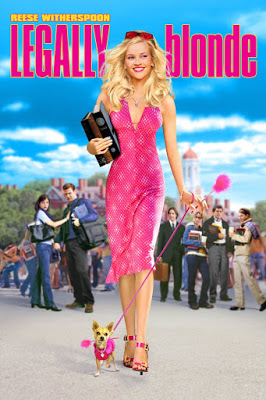
*$15,000 is allegedly the amount paid by actors Felicity Huffman and William H. Macy to allow their daughter unlimited time to complete her SAT exam.
I’m sure I’m not the only parent truly ticked off by the college admissions scandal that has rocked our sense of fair play in higher education. Everyone who’s been through the harrowing process of nagging kids to study for standardized tests, fill out applications, gather letters of support, and observe deadlines has got to be feeling plenty angry that the rich and famous are bypassing all of that. Sure, we always suspected that influence played its part, that the glamour of a celebrity parent or the hope that a zillionaire might endow a building could pave the way for an offspring to be welcomed onto a prestigious campus. And, if we enrolled our own kids in SAT prep courses, we knew we were bettering their chances because we could afford to do so.
Still, I wouldn’t have guessed that some parents, in cahoots with crooked test prep professionals and bribe-able college officials, would go to such egregious lengths to game the system. Like having their kids’ SATs taken by ringers. And helping those same kids to pose as competitive athletes, sometimes in sports they’ve never actually played, thereby gaining them entrance to elite schools like USC and UCLA. (Woe to the aspiring student athlete who loses a place on the squad to make room for these bogus applicants.)
I can think of few movies that deal with the college application process, maybe because it’s generally more grueling than dramatic. There is, though, the segment of Legally Blonde in which the bubbly and curvaceous Elle Woods (Reese Witherspoon), a Beverly Hills gal with a college degree in fashion merchandising, is accepted into Harvard Law. Her ace in the hole is an admissions video that plays up her considerable attributes by posing her in a bikini. (She admits she got “a Coppola” to direct this masterpiece.) But Legally Blonde being a good-natured comedy, Elle turns out to be smart as well as sexy, and a credit to her future profession.
Most Hollywood movies that deal with college life don’t give us a chance to wonder how the students got there. In The Graduate, we know all about Benjamin Braddock’s college successes—as a student, an athlete, and a campus leader—but we are never encouraged to question the strings his parents pulled to have him admitted into that east coast bastion of learning in the first place. The lives of the two main characters in Love Story revolve around the venerable Harvard campus. Oliver (Ryan O’Neal) is a wealthy young man, a scholar and a jock, who was probably helped to enter Harvard by way of his legacy status. Jenny (Ali MacGraw) is a smart-as-a-whip young woman from a working-class home who’s now working her way through Radcliffe. How hard did she have to push to get accepted? What rich kid did she displace? That’s not what this schmaltzy film is all about.
A very different look at college life, but one that is dear to my heart, is Harold Lloyd’s 1925 silent classic, The Freshman. This film, partially shot on the USC campus, looks at college as a place of hijinks, formal dances, and football games, where education definitely takes a back seat to social life. Lloyd’s lovably inept “Speedy” character, a new arrival on campus, is determined to find popularity as a football hero. Instead, he is recruited to take the place of the tackling dummy he’s accidentally destroyed. And his attempts to plan the big dance are equally disastrous. Still, he’s ultimately a winner, unlike those parents who thought they could buy their children college glory. ,

Published on March 15, 2019 15:08
March 12, 2019
Disagreeing with a Gentleman’s Agreement

With harsh words in Congress, a massacre in Philadelphia, and mock Nazi salutes in Orange County, California, the specter of anti-Semitism seems once again to be rearing its ugly head. Which puts me in mind of a movie my parents let me stay up to watch, many decades ago, on the late-late show. Gentleman’s Agreement, based on a best-selling novel, was released in 1947, a scant two years after Hitler’s Germany went down to defeat, and with it the Nazi plan to remove all Jews from the face of the earth. Gentleman’s Agreement, though, had nothing to say about death camps or refugees from Europe. Instead it dealt with the insidious way that anti-Jewish bias could be seen as part and parcel of American life. It’s pleasant to think that such bias is part of a bygone era, that America has learned acceptance of those of Jewish ethnicity, if not of African-Americans, gays, Latinos, Muslims, and other minority groups. But after some recent headlines, I’m not so sure.
The victims in Gentleman’s Agreement do not look or act different from mainstream Americans. This is not a film arguing for tolerance on behalf of those whose customs or speech or form of worship singles them out as “other.” The main “Jew” in the film is the very handsome, very All-American Gregory Peck. I put the word in quotes because Peck’s character, hard-hitting investigative journalist Philip Schuyler Green, has assumed a Jewish identity only for the sake of an article-in-progress, “I Was a Jew for Six Months.” Having previously lived in hobo camps to write about poverty, Green now takes on the overtly Jewish name Phil Greenberg to find out for himself what bigotry lies beneath the polite surface of American life. As the newly-minted Greenberg, Peck looks no different, sounds no different, acts no different than he did as Schuyler Green. But suddenly he’s refused service at nice hotels, his landlord looks askance at his name on the mailbox, and his son gets roughed up by classmates. When he’s a guest of honor at a party in the tony, “restricted” community of Darien, Connecticut, guests start cancelling.
A key character in Gentleman’s Agreement is Dave Goldman, a longtime friend of Schuyler Green. Just back from military service and trying to enter civilian life, Dave has developed a thick hide and a cynical outlook to protect himself from the constant slings and arrows of bigots. (In one restaurant scene, we witness a nasty attack on him by a pugnacious drunk, and it seems near-impossible for him to find housing for himself and his young family.) The role is played by John Garfield, the real-life son of Russian immigrants. The rich irony is that Garfield became a star in Hollywood only after studio bosses insisted he give up his birth name, Jacob Julius Garfinkle.
In Gentleman’s Agreement (the title refers to the unspoken “rules” that prevent non-WASPs from fully participating in American life), Jews are not entirely let off the hook. In the offices of Schuyler Green’s editor, he’s surprised to discover that his newly-appointed secretary, played by June Havoc, is covertly Jewish. She’s pleased to have him as a boss, but she’s strongly opposed to his campaign to accept workers of all backgrounds at the magazine. She’s worried, you see, about the potential presence of the “wrong” kind of Jews, those who might conform to the stereotypes (“loud,” “pushy,” “garish) with which American Jews have been saddled. The film’s strongest condemnation, though, is of the “nice” people who stay silent when others face ridicule, or worse, because of who they are.
Published on March 12, 2019 14:41
March 7, 2019
She Gon’ Make Me Move to Miami?
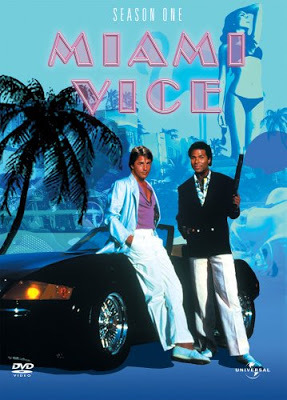
I can’t count the number of times I’ve grooved in my Zumba class to the sexy Enrique Iglesias hit, “Move to Miami.” It’s catchy and fun, as well as very very Latin. When, not long ago, I found myself in Miami for real, I couldn’t help remembering how the reputation of the place has changed.
Florida has always held a fascination for the film community. Citizen Kane’s Charles Foster Kane (a fictional near-ringer for the very real William Randolph Hearst) built his pleasure palace not on the California coast but rather in the Sunshine State, though his Xanadu was actually filmed on the studio lot. The more eccentric side of Florida life (featuring swamps and trailer parks instead of palatial estates) has shown up in such films as Spike Jonze’s Adaptation, freely adapted by Charlie Kaufman from Susan Orlean’s The Orchid Thief.
Long before I ever set foot in Florida, my image of the place came courtesy of parodist Allan Sherman, whose “Streets of Miami” was an hilarious send-up of the old cowboy lament, “Streets of Laredo.” Sherman sang plaintively of an argument between two transplants from the New York shmatta biz who can’t agree on whether to spend company money on a room at Miami Beach’s fancy-schmancy Fontainebleau (or, in the song, “Fountainblue”) Hotel. A gun battle erupts at the stroke of high noon, leading to a mock-tragic conclusion.
Allan Sherman’s Miami Beach was the one I myself glimpsed back in 1965, in the course of a family driving trip. What I remember is row upon row of drab motels, and then the garish Fontainebleau and Eden Roc, all of them completely blocking any view of the actual ocean. I remember matronly ladies and paunchy men clustered around hotel swimming pools, zinc oxide on their noses, working on their tans. I remember tall drinks sporting paper umbrellas. I do not remember anyone actually swimming. It was, all in all, the bourgeois milieu so ruthlessly depicted in The Heartbreak Kid, where an annoying young bride’s painful sunburn gives her brand-new husband (Charles Grodin) the opportunity to fall in love with someone else.
The original version of The Heartbreak Kid came out in 1972. It would be a decade before the Miami region was transformed by cultural forces. As pointed out by the leader of a walking tour I enjoyed, there were three huge developments that changed Miami Beach forever. The first was an improvement of the beachfront, under the auspices of the Army Corps of Engineers. The second was the discovery, by some of the area’s artistic leaders, that the crumbling art deco hotels and civic buildings south of the Fontainebleau could be spruced up into tourist attractions. It was they who introduced the dreamy pastels that brighten the boulevards of South Beach today. And then the Miami Vice TV series came along to bathe the area in Hollywood glamour. Add to this the spice of Latin culture that has come to mark this area since the exodus that followed the Cuban revolution and you have a place of magical festivity.You can see it in some of its glory in the 1983 Scarface (which features a Cuban take on the old gangster saga) and 1996’s The Birdcage. And last year’s American Crime Story exploring the killing of fashion designer Gianni Versace made use of the South Beach locations where events really unfolded.
But that enticing music video promoting “Move to Miami” by way of scantily-clad beauties? I’m pretty sure those sexy young women are on the wrong coast. Isn’t that my home town, Santa Monica?
Published on March 07, 2019 08:55
March 5, 2019
Ray Bolger: Why Everybody Loved Raymond
 It’s remarkable how far a youthful enthusiasm can take you. Sometimes you can even become passionate about a performer long after his death. Holly Van Leuven, a child of the Nineties, discovered the nimble feet and tender heart of Ray Bolger via old TV re-runs and clips on YouTube. As a lover of early musical theatre and its precursor, vaudeville, she quickly became aware that Bolger was far more than the featured role he played in MGM’s The Wizard of Oz, that he was in fact an essential part of America’s theatrical heritage. Helped along by the Biographers International Organization, which awarded her its inaugural Hazel Rowley Prize for a first-time biographer, Holly has just published the fruits of her research through the prestigious Oxford University Press. Her book’s title:
Ray Bolger: More Than a Scarecrow.
It’s remarkable how far a youthful enthusiasm can take you. Sometimes you can even become passionate about a performer long after his death. Holly Van Leuven, a child of the Nineties, discovered the nimble feet and tender heart of Ray Bolger via old TV re-runs and clips on YouTube. As a lover of early musical theatre and its precursor, vaudeville, she quickly became aware that Bolger was far more than the featured role he played in MGM’s The Wizard of Oz, that he was in fact an essential part of America’s theatrical heritage. Helped along by the Biographers International Organization, which awarded her its inaugural Hazel Rowley Prize for a first-time biographer, Holly has just published the fruits of her research through the prestigious Oxford University Press. Her book’s title:
Ray Bolger: More Than a Scarecrow.
To read about Ray Bolger is to learn about the days when vaudeville was America’s favorite form of entertainment. Though Bolger, having survived a tough childhood, originally studied to be an insurance salesman, it was his talent for dancing that paved the way for a bright future. His lanky limbs and improvisational talents helped him excel at what was then called “eccentric dance”: he could kick his leg over his head, or go down into the splits, inch halfway up, and then collapse downward again, with a surprised look on his face. In Holly’s words, audiences saw him as a “hapless sadsack without control of his motor skills.”
Bolger’s gifts helped him move onto the Broadway stage and eventually to Hollywood. Only trouble: he was a performer who thrived on spontaneity, and the restrictions implicit in the making of movies cramped his style. In one later interview he explained, “I have to be free. That’s the difficult thing in the motion picture business—I felt I was dancing in a telephone booth.”
Bolger performed a specialty number in a 1936 MGM faux-biopic, The Great Ziegfeld, but made no strong impression. He was much happier that same year starring in On Your Toes, a Broadway musical featuring “Slaughter on Tenth Avenue,” a jazz ballet choreographed by the dance world’s George Balanchine, with whom he got along famously. (Bolger had no part in the subsequent film version.) But of course his big screen moment came when he signed on to play the Scarecrow in 1939’s The Wizard of Oz, enjoying a reunion with fellow vaudevillians Jack Haley and Bert Lahr who played the Tin Man and the Cowardly Lion. Bolger’s loose-limbed style was perfectly suited to the Scarecrow’s role, and he cherished a warm friendship with Judy Garland. As a man who adored children, he watched with dismay as the young star was compelled to grow up much too fast. (In later years, it was a re-run of his guest appearance on Garland short-lived TV variety show that first brought Bolger to Holly’s attention.)
As a performer Bolger found his greatest hurrahs as the star of Broadway’s Where’s Charley? This 1948 musical, based on a fusty British farce called Charley’s Aunt, cast Bolger as a college man masquerading as his own Victorian aunt in order to court a young lady named Amy. The hit show soon had the whole nation singing the lilting Frank Loesser tune, “Once in Love with Amy.” This became Bolger’s signature number, performed countless times on television and in his nightclub act. Alas, the film version of Where’s Charley, which became a top-grossing 1952 release, can’t easily be enjoyed today. Thanks to complex disagreements between Warner Bros., the stage producers, and Loesser’s widow, it only survives in bootleg editions.
Ray Bolger showing off his dancing feet in Judy Garland’s The Harvey Girls
Published on March 05, 2019 09:29
March 1, 2019
Singin’ and Dancin’ with Donen
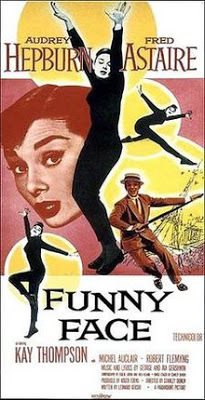
Recently I’ve been thrilled to introduce a new generation to Singin’ in the Rain, considered by many to be the best Hollywood musical of all time. Singin’ in the Rain (released in 1952) has it all: dance, song, comedy, social satire, a soupçon of movie history. Or, to put it another way, it has agile Gene Kelly, adorable Debbie Reynolds, rubber-limbed Donald O’Connor, and the hilarious Jean Hagen, along with a host of movieland second bananas (even Rita Moreno in a tiny part). So who made it all work? Gene Kelly generally gets most of the credit, but there was also a co-director, Stanley Donen.
The name Stanley Donen pops up often in the annals of movie history. After co-directing with his good friend Kelly the innovative shot-on-location On The Town (1949), he moved out on his own with a string of elegantly dance-based musicals. Along with Singin’ in the Rain, these included Royal Wedding (starring Fred Astaire and Jane Powell), Seven Brides for Seven Brothers (who can forget that barn-raising sequence?), Funny Face (featuring the delectable combination of Astaire and Audrey Hepburn), and many others. In the Sixties, as movie musicals became more and more bloated, he about-faced into romantic thrillers like Charade, as well as the wildly experimental dramedy, Two for the Road. In 1974 he helmed a small, unlikely musical based on Antoine de Saint-Exupéry’s The Little Prince, featuring Bob Fosse as the most slithery of snakes. His final stab at a musical involved a witty spoof of the Busby Berkeley style, as part of the “Baxter’s Beauties of 1933” segment of 1978’s Movie Movie
Frankly, the news of Stanley Donen’s death last week was a shock to my system. I associated him so strongly with the Golden Age of Hollywood that it was hard to believe he was still alive until February 21, 2019, when he died at age 94. The truth is—Donen started out young. Born in Columbia, South Carolina in 1924, he was a shy kid, one who faced bullying and anti-Semitic taunts. He found refuge at the movies, where he soon fell under the spell of Astaire and Rogers in Flying Down to Rio. That’s why, at age 10, he started taking tap dance lessons. Some seven years later, as a chorus boy hoofing in Broadway’s Pal Joey, he connected with Kelly, the show’s breakout star. After coming to Hollywood in 1943 for a dancing role in the movie version of Best Food Forward, he soon found his footing as a dance director in movies with Kelly and others. (One somewhat bizarre footnote to his history with Gene Kelly: At various times, both were married to the same woman, dancer Jeanne Coyne. That may have been part of the reason why the relationship of the two pals eventually floundered. In all, Donen was married five times. And for the last two decades of his life, he was the partner—and romantic suitor—of Elaine May.)
For all his talent, Stanley Donen was never nominated for a competitive Oscar. But the Academy made up for that oversight in 1998, granting him an honorary Oscar “in appreciation of a body of work marked by grace, elegance, wit and visual innovation.” Thankfully, the award was presented to him back in the days when honorary awards were included in the televised Oscar broadcast. So the whole world, in addition to the lucky folks seated in L.A.’s cavernous Shrine Auditorium, got to enjoy the still spritely septuagenarian who danced off with his Oscar as well as everyone’s hearts.
Published on March 01, 2019 13:35
February 26, 2019
The Academy Picks Its Oscar Favourites
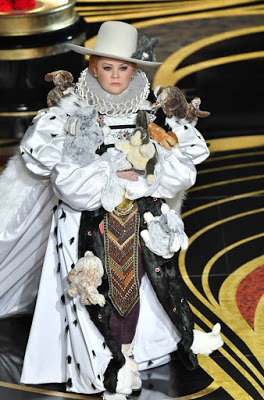 Melissa McCarthy and bunnies
Melissa McCarthy and bunniesSome folks in the Dakotas consider me an Oscar expert. I’ve long been a regular guest of Don Briscoe at KSDN in Aberdeen, South Dakota as well as Bob Harris at KFGO in Fargo, North Dakota, giving my predictions over the airwaves as to who will go home with golden statuettes. In truth, though, my insights into Hollywood jibe nicely with the dictum of screenwriter William Goldman: “Nobody knows anything.”
This year’s Oscar ceremony was supposed to be a disaster because it had no host. It was supposed to be (even more than usual) several long hours of endless self-congratulation, interspersed with failed attempts at humor. And, because of the political climate we’re living in – as well as logistical controversies within the Academy itself -- it was supposed to be marked by a good deal of negative emotion. Instead, surprise! This was the briskest show in years, a host’s opening monologue was not missed, and the evening played out in a spirit of “Can’t we all just get along?” If you enjoy listening to angry diatribes, this was not the show for you. Basically it was a good-natured lovefest for those passionate about the joy of making movies.
Which is not to say that it lacked lively moments. Tina Fey, Amy Poehler, and Maya Rudolph were cheeky and funny as presenters. Keegan-Michael Key descended from the rafters with an umbrella: shades of Mary Poppins. Melissa McCarthy (a deserving Best Actress nominee for Can You Ever Forgive Me?) took the stage in a regal costume that was an hilarious tribute to the bunnies of The Favourite. Lady Gaga and Bradley Cooper were touchingly passionate in their rendition of the soon-to-be Oscar-winning ballad, Shallow.
Among the winners were women (including Asian and black women) making history. A victorious short documentary called Period. End of Sentence brought the subject of menstruation into the open. A gracious Mahershala Ali, claiming his second Supporting Actor Oscar in three years, was the first winner I can remember who thanked his on-camera double. (This was the pianist who both coached him and provided the hands for many of Ali’s character’s most vivid musical moments, so he was certainly worthy of a shout-out.) I agreed with most of the honors, but was sad to see Glenn Close lose for the seventh time. How ironic that she was overlooked by the Academy for her brilliant portrayal of an overlooked wife. Still, it was priceless to hear Best Actress winner Olivia Colman exuberantly burble about how she was delighted, amazed, amused, even embarrassed by her victory over someone she’d long admired. And of course any event that features Spike Lee, in head-to-toe purple, rejoicing in the victory of his BlacKkKlansman script by leaping into the arms of Samuel L. Jackson, has got to feel special.
Lee didn’t stay happy for long. He kept his seat when Alfonso Cuarón was named Best Director for Roma, but apparently couldn’t stomach the Best Picture victory of Green Book, the feel-good road trip movie that has raised hackles among some in the African American community. That’s when he tried, without success, to head for the exit. It fascinates me that some people are so upset by a movie that sees American life through an optimistic lens. (Others with genuine civil rights credentials, like Harry Belafonte and Representative John Lewis who was present to introduce the film, have given it their unbridled support.)
Significant factoid: There were eight nominees for 2018’s Best Picture. Each one of them nabbed an Oscar (Vice’s was for Christian Bale’s makeup). So a good time was had by most.
Published on February 26, 2019 15:51
February 22, 2019
Albert Finney: A Rogue By Any Other Name . . .
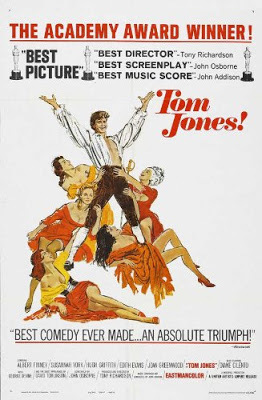
When I read about the death of Albert Finney, at age 82, I realized how many of his later roles I’ve seen. He was the gamekeeper in on the action in Skyfall (2012), the sinister father in Before The Devil Knows You’re Dead (2007), and the whimsical yarn-spinning dad in Big Fish (2003). His last of five Oscar nominations came from playing Julia Roberts’ attorney/boss in Erin Brockovich. Whatever the film, he was convincing in a variety of moods and with a variety of accents. But I was always surprised, in those later films, to see what a solid, sturdy man he was. That’s because, when I think of Albert Finney, I can’t help remembering him as a lithe young rogue in the title role of Tom Jones.
The History of Tom Jones, A Foundling will be recalled by English majors as a classic British novel, written by Henry Fielding back in 1749. It’s the picaresque tale of a roguish young lad who goes out in the world to seek his fortune, as well as his parentage. One of my great achievements in college was reading the entire novel (some 700 pages long) in a single week, because I couldn’t bear to have the ending spoiled when I walked into my class on the 18thcentury novel. I’m not sure who got the bright idea that Ton Jones would make a good movie, but the 1963 film written by playwright John Osborne (of Look Back in Anger fame) and directed by Tony Richardson was a triumph. In an era when we were all starting to go bonkers for anything British (like miniskirts, Angry Young Men, and the Beatles), Tom Jones proved to be cheeky, sexy, and above all stylish fun. None of us would soon forget how the droll voiceovers, the Keystone Kops pacing of some of the action, Tom’s winking asides to the audience, and the most suggestive of dining scenes turned the stodginess of most costume dramas upside down. (I wonder, in fact, if the makers of 2018’s The Favourite, looked to Tom Jones for comic inspiration.)
In the title role, Finney (a screen newcomer to most of us back then) was a charmingly boyish mischief-maker. And that roguish glint in his eye continued to serve him throughout his career. The film I personally cherish is from that magic movie year, 1967. That’s when Stanley Donen directed Finney and Audrey Hepburn in a before-its-time movie about love and marriage, Two for the Road. Frederic Raphael (an Oscar winner for Darling) wrote a provocative out-of-sequence script featuring a very young English couple who meet and then proceed to fall in and out of love during a series of road trips through the French countryside. Two for the Road is notable for its candor about sex, fidelity, and the tarnished promise of happily-ever-after. The scrambled time scheme requires us to bounce back and forth between the fun of first attraction, the joy of commitment, the challenges of child-bearing, and the mixed blessings of financial success. Throughout it all, the two leads remain stunningly attractive, even while their hairstyles change and their modes of transportation become increasingly posh. I don’t think Hepburn has ever looked more winsome, and Finney is fully the perfect match. So perfect, in fact, that rumors abound that their real-life affair on the set of this film is what ended her marriage to actor Mel Ferrer.
Finney turned down a knighthood, and steadily refused to attend Oscar shindigs, even when nominated. Vanity wasn’t part of his nature, but variety certainly was.

Published on February 22, 2019 11:47
February 19, 2019
Looking at Mary Poppins Through a Glass Magically
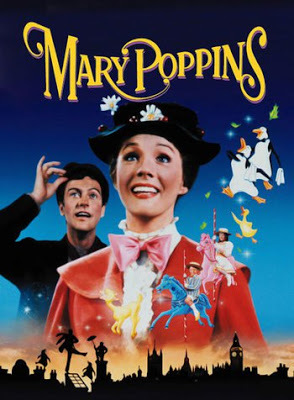
In an era keen on updating classic movies—or at least concocting sequels—I admit I have not yet watched the new Mary Poppins Returns, in which Emily Blunt cavorts with Lin-Manuel Miranda. Yes, I’m curious to see how these two super-amiable performers handle their respective roles. Nonetheless my heart still belongs to Julie Andrews and Dick Van Dyke, despite the latter’s atrocious mangling of Cockney English.
Last night I took a turn down Memory Lane when I re-watched the original Mary Poppins, the 1964 Disney musical that introduced film audiences to Broadway’s Julie Andrews and the always-useful word “supercalifragilisticexpialidocious.” I’m dating myself in admitting that this film debuted (at L.A.’s palatial and now long-gone Carthay Circle Theatre) during my senior year in high school. Of course in one sense my friends and I were far too old for a juvenile entertainment about two small kids and their nanny. But I suspect that’s part of why we kept going back to see it. On the brink of leaving our families behind as we went off to college and the big world beyond, we felt suddenly sentimental about the cheery days of our childhoods. We’d all encountered P.L. Travers’ series of Mary Poppins books years before, back when we first learned to read. Though Andrews was, frankly, too pretty and too perky (what’s all this “spoonful of sugar” business?) to be Travers’ acerbic nanny, we loved her just the same, And it was only natural for us to think of our own early days as magic times.
Re-watching Mary Poppins in the company of a seven-year-old boy and a little girl who’s almost five, I delighted in it all over again. The kids loved the jokes (“A wooden leg named Smith!”), as well as such flabbergasting moments as the characters popping into chalk pictures and having tea parties on the ceiling. As for me, I was reminded of the movie’s technical cleverness. In an era long before the advent of CGI, amazing things happen. There’s also a fabulous chimney-sweep dance number that rivals the barn-raising sequence in Seven Brides for Seven Brothers for male Terpsichore, as well as some droll sight gags and the wonderful work of a slew of character actors. The cast includes such British treasures as Arthur Treacher, Reginald Owen, Arthur Malet, and the hilariously furious Elsa Lanchester (the Bride of Frankenstein herself!) as a departing nanny. In the larger roles of the children’s parents, it’s a pleasure to see David Tomlinson as a strait-laced papa and Glynis Johns as a lovingly addled mama. And some Old Hollywood royalty appears too: that’s Ed Wynn as the buoyant Uncle Albert (he who floats aloft because he can’t stop laughing) and Jane Darwell (an Oscar-winner as Ma Joad in The Grapes of Wrath) selling bird-seed on the steps of St. Paul’s Cathedral.
Of course, there are some awkward Disney ironies too. We might well question Disney’s trivializing of the British suffragette movement, as reflected in Glynis Johns’ dizzy performance. And it’s distinctly odd that the dramatic climax of the film comes when little Michael can’t be talked into investing his pocket-money tuppence in his father’s bank because he’d rather spend it to feed hungry pigeons. We’re meant to be squarely on Michael’s side, but since when is Disney (the new owner of Fox Studios and pretty much half of Hollywood) opposed to red-blooded financial investment?
But finally, who cares? It’s lovely to enjoy a jolly ‘oliday with Mary Poppins. And the message that childhood is fleeting is something of which we could all use a reminder.
Published on February 19, 2019 13:32
Beverly in Movieland
I write twice weekly, covering topics relating to movies, moviemaking, and growing up Hollywood-adjacent. I believe that movies can change lives, and I'm always happy to hear from readers who'd like t
I write twice weekly, covering topics relating to movies, moviemaking, and growing up Hollywood-adjacent. I believe that movies can change lives, and I'm always happy to hear from readers who'd like to discuss that point.
...more
- Beverly Gray's profile
- 10 followers



